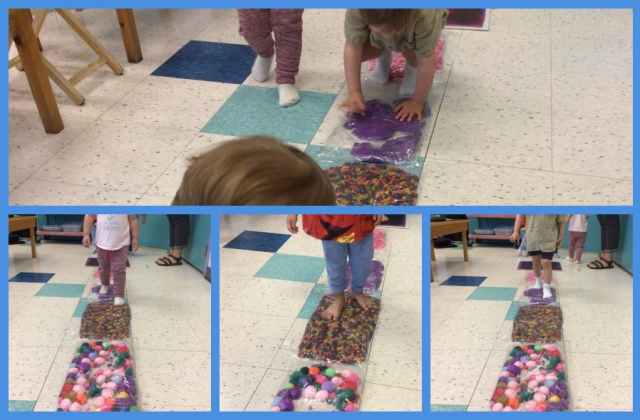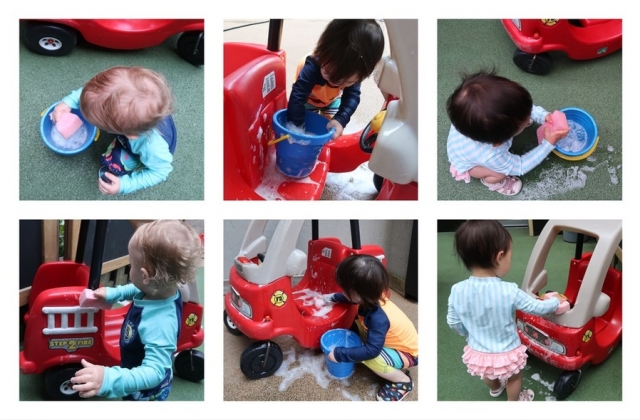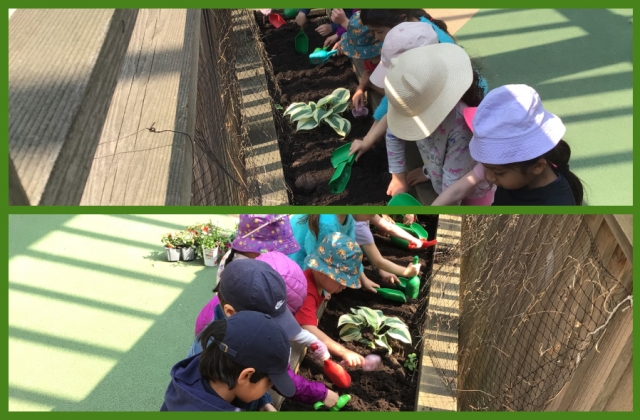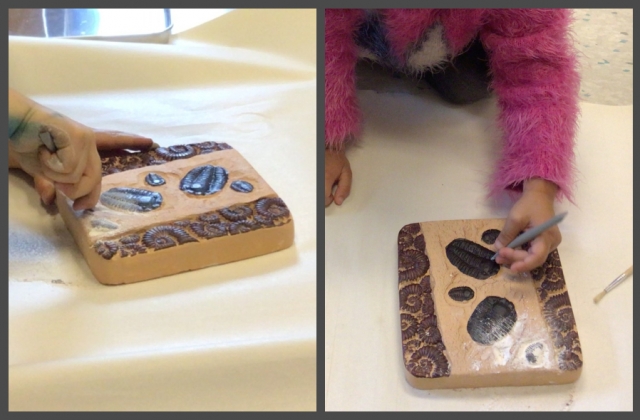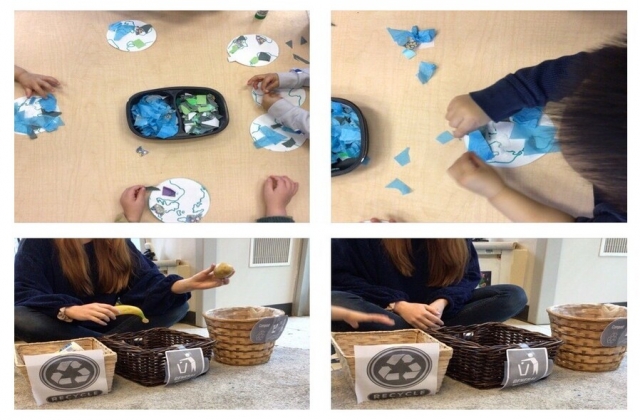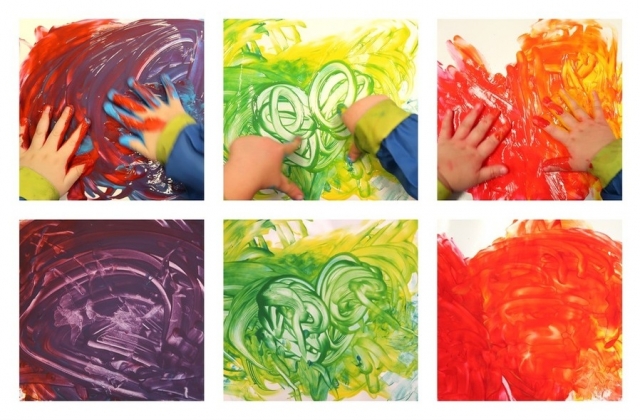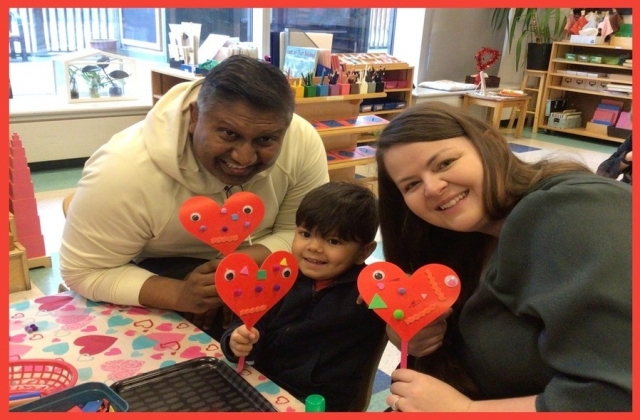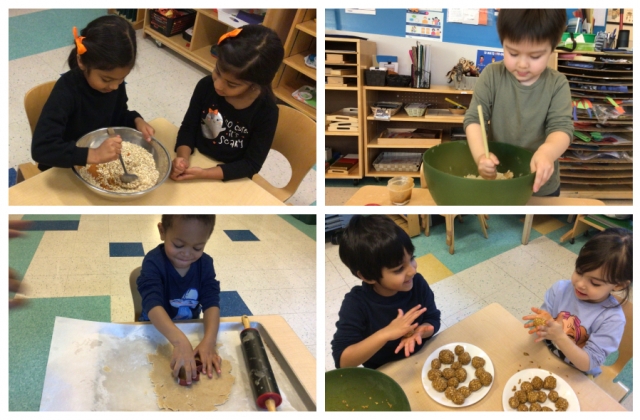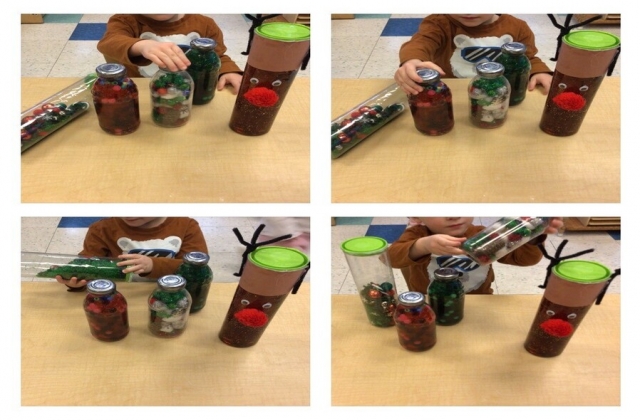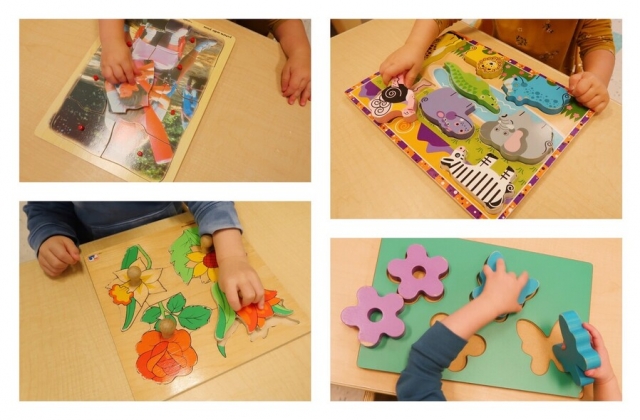Sensory Walk
The children are exploring their sense of touch using their feet! They walked along various materials and explored the different sensations through their feet, comparing how each felt. It is a great activity to help with balance and coordination, and can be fun to create at home. (Please click for more info and full photos.)
View
